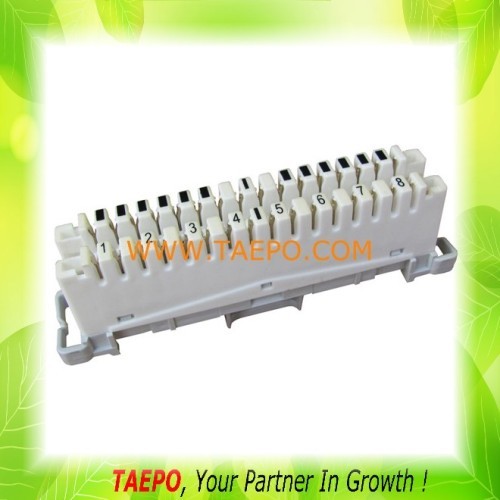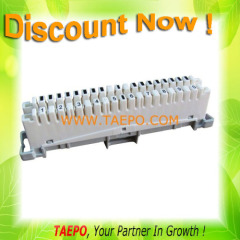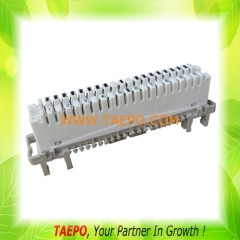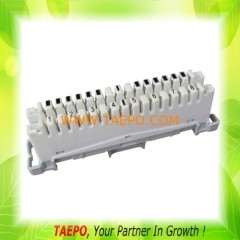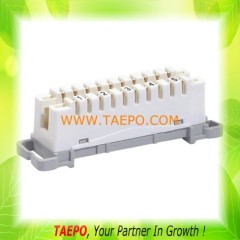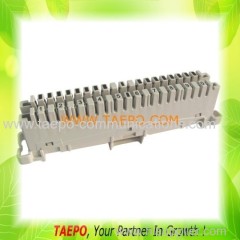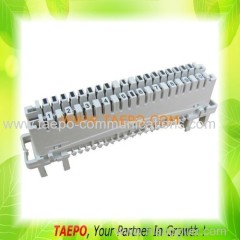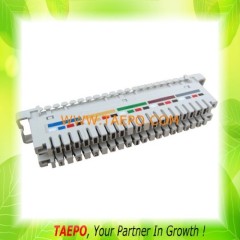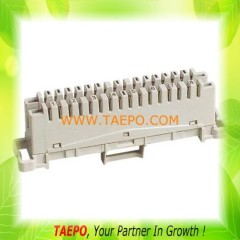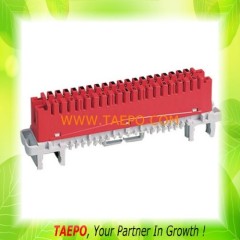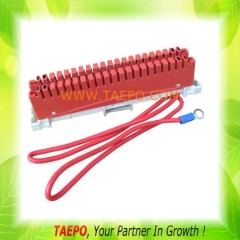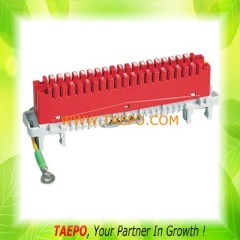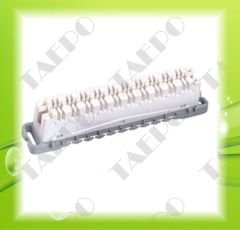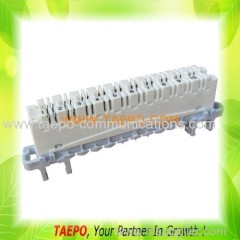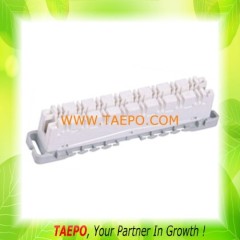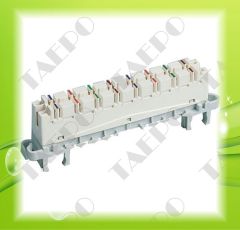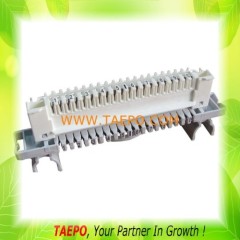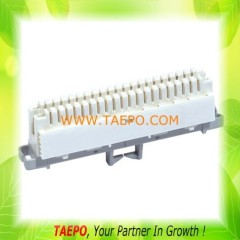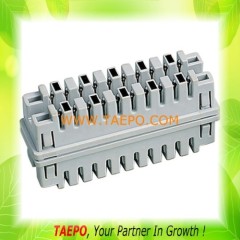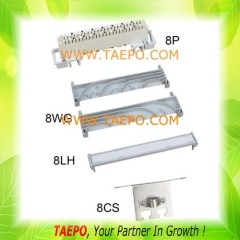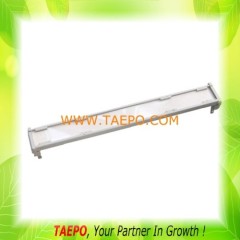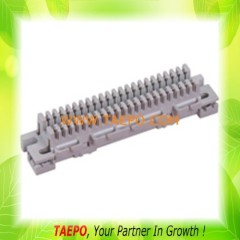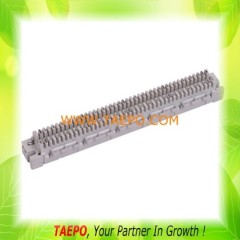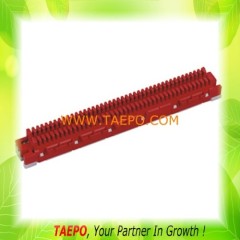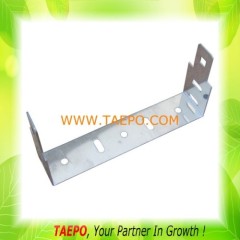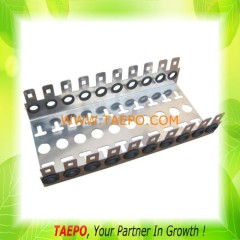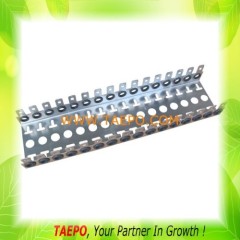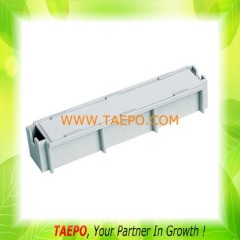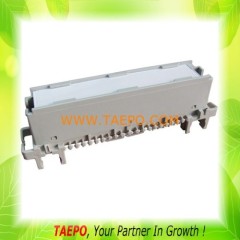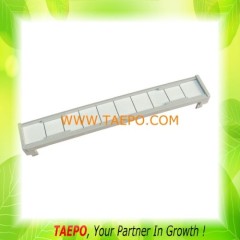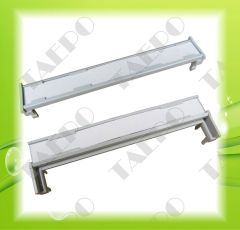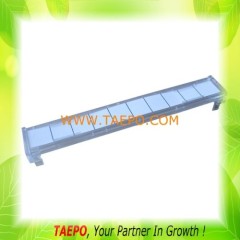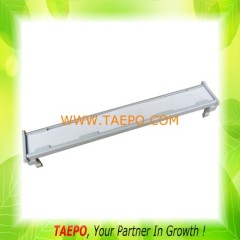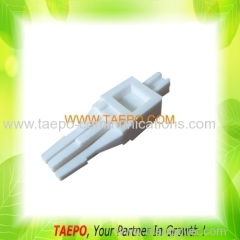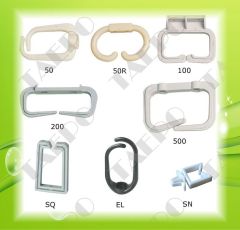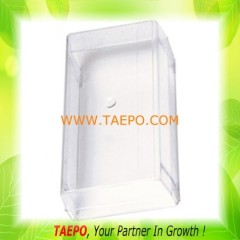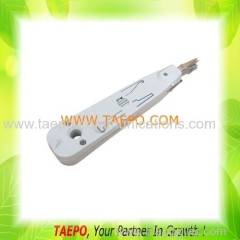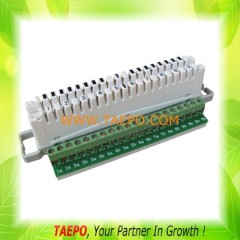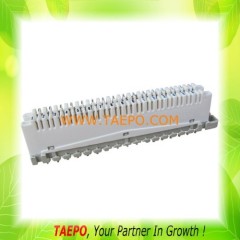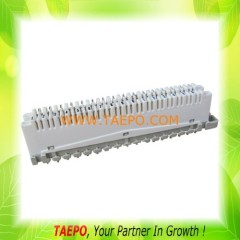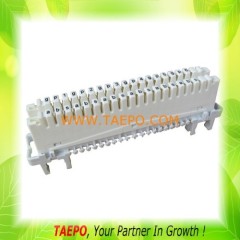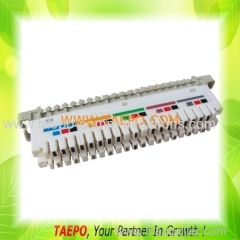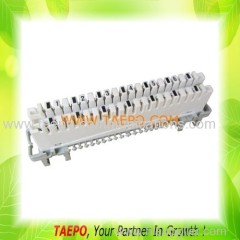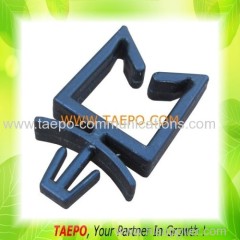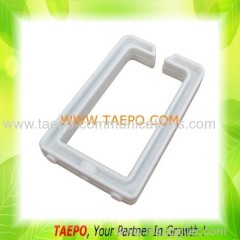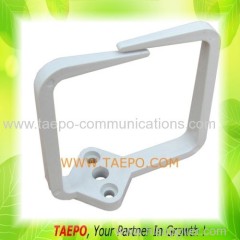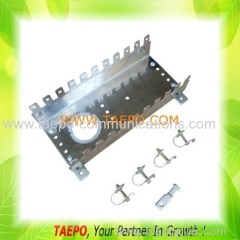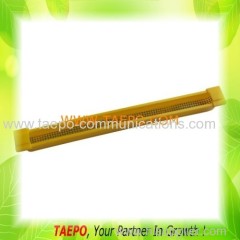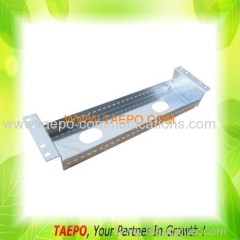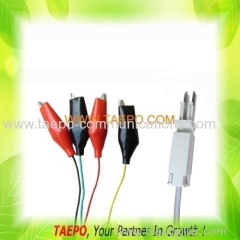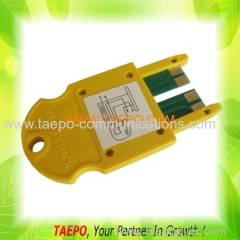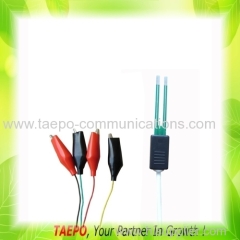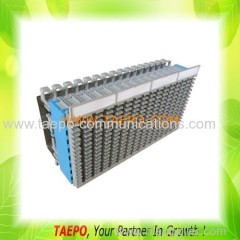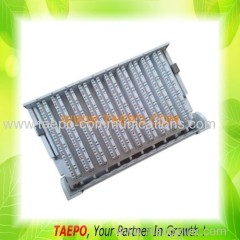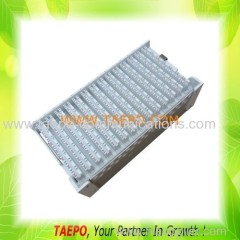.gif)
|
NINGBO TAEPO Communications Co., Ltd.
|
LSA disconnection module
| Payment Terms: | T/T,L/C,WU |
| Place of Origin: | Zhejiang, China (Mainland) |
|
|
|
| Add to My Favorites | |
| HiSupplier Escrow |
Product Detail
It is used throughout the distribution level, in the main distribution frame (MDF), in the cross connection cabinet (CCC) and in the dp boxes
8 pairs LSA disconnection module
Descriptions
Order Data
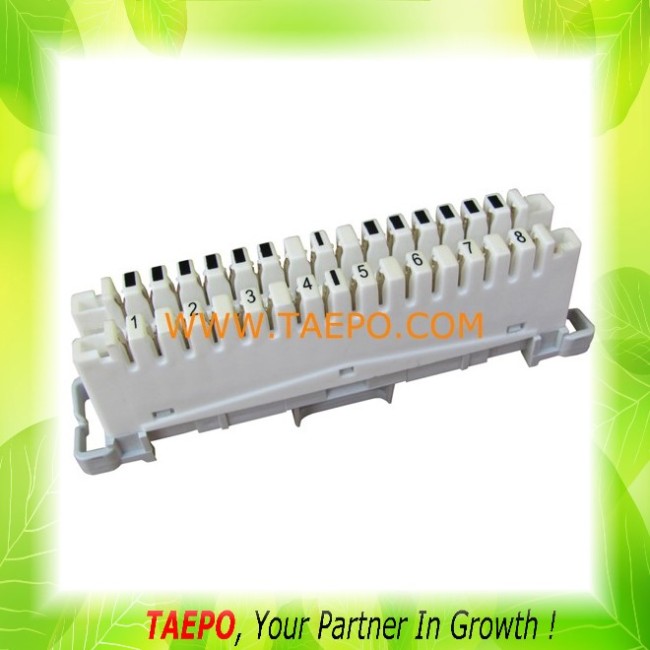
8 pairs LSA disconnection module
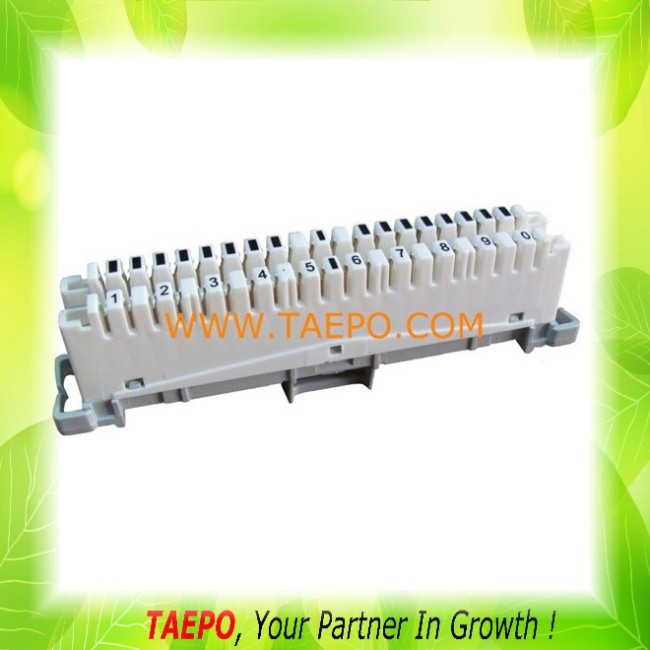
Referenced picture for 8 pairs LSA disconnection module
| ITEM NO | UNIT | DESCRIPTIONS |
| TP-1201-10 | pcs | 10pairs LSA disconnection module |
| TP-1201-10P | pcs | 10pairs LSA profile disconnection module |
| TP-1201-10CL | pcs | 10pairs LSA disconnection module, color label |
| TP-1201-8 | pcs | 8pairs LSA disconnection module |
| TP-1201-5 | pcs | 5pairs LSA disconnection module |
Descriptions
TP-1201 LSA disconnection module is used throughout the distribution level, in the main distribution frame (MDF), in the cross connection cabinet (CCC) and in the distribution point (DP) boxes. It is highly reliable and cost-effective wire connection system for modern telecommunications and data networks.
It adopts IDC (Insulation Displacement Connection) technique, which means that no soldering, wire-stripping or the use of screws is necessary, and which clamps the wires at a 45 degree angle, thus dramatically reducing the risk of a poor termination and increasing the wiring productivity. The IDC contact is phosphor bronze, with silver plating.
1201 LSA disconnection modules use a normally closed two piece contact, with a convenient disconnection feature. By inserting a disconnect plug into a wire pair, you can temporarily or permanently disconnect the circuit. A test cord can be inserted into a pair to test each side of the circuit independently. This greatly accelerates fault identification.
The center contact point can also be used for monitoring or overvoltage protection.
Main Features
Schematic Diagram

Schematic Diagram for 8 pairs LSA disconnection module
Technical Parameters
Main Features
Insulation Displacement Connection
No Wire-stripping, screw and solder free
Reliable connections
Clear labeling
Flame retardant performance
Modular design and installations
Gas tight connection
Two wires per contact
One push wire insertion
No Wire-stripping, screw and solder free
Only one inexpensive tool requiredSchematic Diagram

Schematic Diagram for 8 pairs LSA disconnection module
Technical Parameters
Working temperature: -40℃ ~ 80℃
Relative humidity: ≤93%(+40℃)
Appearance: the color of all metal and plastic parts is uniform, without any scratch, rust, crusting and cracks.
The labels are clear and complete.
Insulation resistance: under normal ambient conditions, after high temperature test, low temperature test, temperature varing test and humidity heat test, the insulation resistance between any two independent contacts, and/or between contacts and metal parts ≥ 1000MΩ
Contact resistance between contacts: under normal ambient conditions, the contact resistance between contacts ≤7 mΩ. After high temperature test, low temperature test, temperature varing test and humidity heat test, the increasing resistance ≤3 mΩ And after inserting the connection cord (or test cord) into the module for 200 times, the increasing resistance ≤3 mΩ
Contact resistance between conductor and contact: under normal ambient conditions, the contact resistance between contacts ≤3 mΩ. After high temperature test, low temperature test, temperature varing test and humidity heat test, the increasing resistance ≤2 mΩ. And after terminating for 200 times, the increasing resistance ≤2 mΩ.
Dielectric strength: under normal ambient conditions, after high temperature test, low temperature test, temperature varing test and humidity heat test, the insulation resistance between any two independent contacts, and/or between contacts and metal parts is able to withstand an AC voltage of 1000V (virtual value) at 45Hz~60Hz sinowave for 1 minute, without spark over and flying arc
Gas tight performance: contact touches the conductor at both sides, and thus forming the gas tight area, while the area of gas tight occupies ≥50% of the touched area on each side.
Conductor diameter range: 0.32mm-0.6mm, while insulation ≤ 1.4mm
Pulling strength:≥25N while pulling from the vertical side of the contacts
Flame retardant performance: all plastic parts are flame retardant, reaching grade of UL FV0
Silver plating thickness: 0.5um
Life circle: ≥200 times
Order Data
Item No | Descriptions |
TP-1201-8 | 8pairs LSA disconnection module |

8 pairs LSA disconnection module

Referenced picture for 8 pairs LSA disconnection module
Didn't find what you're looking for?
Post Buying Lead or contact
HiSupplier Customer Service Center
for help!
Related Search
Disconnection Module
Lsa Module
Lsa Connection Module
Krone Disconnection Module
Module
Solar Module
More>>

